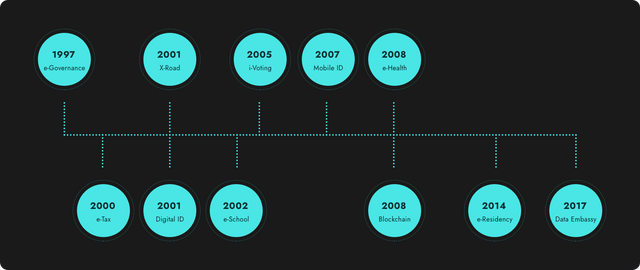What is Voting Model?
Did you enjoy the last episode, What is Token Model – Part 2?
Today we are going to talk about a new model, the Voting Model.
Due to the prolonged COVID-19, more listed companies are adopting electronic voting. A total of 184 companies used electronic voting for general shareholders' meetings in 2021 compared to 2020, which is a 27.9% increased rate from the past year. This is because using electronic voting allows shareholders to exercise their voting rights over the Internet without attending shareholders' meetings. The electronic voting market is growing rapidly, interconnecting with the demand of listed companies to meet quorum non-face-to-face.
Electronic voting refers to the process of voter registration, voting, counting, etc. by electronic means, usually through the Web, or anywhere else. A great advantage about electronic voting is that since it is conducted non-face-to-face, there is no time and place constraint if computers, smartphones, and the internet are available. This easy accessibility of non-face-to-face voting has the effect of increasing citizen turnout compared to face-to-face voting.
However, there still are some problems with convenient electronic voting systems. The biggest issue that has been pointed out of all is security and reliability. Voting must be personalized, that is, confidential about individual choice, and accurately counted from beginning to end of the vote. The results of the vote should be fair and designed to prevent double voting. Because these requirements are difficult to implement in electronic voting and require many skills, face-to-face voting has been preferred over electronic voting.
Blockchain has emerged as a breakthrough in these limitations of electronic voting. Blockchain is a decentralized ledger structure, and everyone who participates in the voting will have a ledger that records each other's transactions. Instead of managing and controlling votes on one server, such as traditional electronic voting, it divides multiple distributed transaction books, which is transparent and prevents the risk of hacking forgery and falsification.
.png)
Thanks to the blockchain nature that hacking is nearly impossible, there is also an effect of saving security costs. In addition, transaction approval records are automatically executed by multiple participants, and voting is carried out quickly and aggregated. Voters can check their votes, know how their votes are counted, and cannot manipulate the votes.
Blockchain voting is already in use in many countries. One of them is Spain and its new party Podemos, founded in 2014, used blockchain voting as a decision-making system within the party. The party's blockchain voting system, "Agora Voting'' was developed for the purpose of a safe and transparent voting system by Eduardo Robles Elvira, the chief technology officer (CTO) of IT startup "nVotes". The system is designed to handle the entire voting process on voters' computers. Multiple locks and key passwords protect the vote and prevent administrators from opening the vote arbitrarily without the National Election Commission's participation. This program is provided free of charge, and allows convenient voting by providing different set ups such as multiple voting, preference reflection, delegating options and so on.
Another country is Estonia, a European IT powerhouse. The Estonian government first attempted the introduction of e-government in 1997, electronic ID and electronic signature schemes in 2002 and i-Voting in 2005 for the first time in the world.

Source: E-estonia
Electronic voting lasted for a total of six days from 10 days to 4 days before election day, and about 30% of the people participated in it. Making use of the advantage that online voting is a real-time vote, you can also change the supporting candidate by the end of the voting period. Since the introduction of electronic voting, the ratio of electronic voting to actual voting was 44% (56.3 million votes in total and 24.7 million votes in electronic voting), a significant increase from 25% in the 2015 general election.
There is also an active movement to introduce electronic voting in Korea. The National Election Commission(NEC) along with the Ministry of Science and ICT and the Korea Internet & Security Agency(KISA) has set up a "Blockchain-based online voting system" that has the capacity to process more than 10 million votes. NEC will carry out the blockchain-based online voting system construction project from May to December 2021. After establishing the system by the end of this year and beta run, NEC will introduce blockchain-based online voting services in full-scale by 2022. Based on the previous cases, if electronic voting is introduced in Korea, it can increase civic participation and voter turnout.
Along with the day to day developing domestic electronic voting market, the Protocon Network also presents a voting model that allows both anonymous and anonymous voting. Protocon Network has a sufficient performance to handle large-scale voting, so it can utilize voting models for online voting in the public and private sectors, including local governments, government agencies, and cooperatives. In addition to general voting, it will also be used as a voting tool for participating in network governance decision making.
Please look forward to the use of Protocon's voting model in the electronic voting market!
Reference
Lee. Roo-da, Lim. Joa-sang, "Electronic Voting Systems Using the Blockchain", Journal of the KICE, vol.23, no.1, pp. 103-110, Jan.2019.
Official Protocon Links
Telegram
Twitter
Facebook
Medium
Reddit
Github